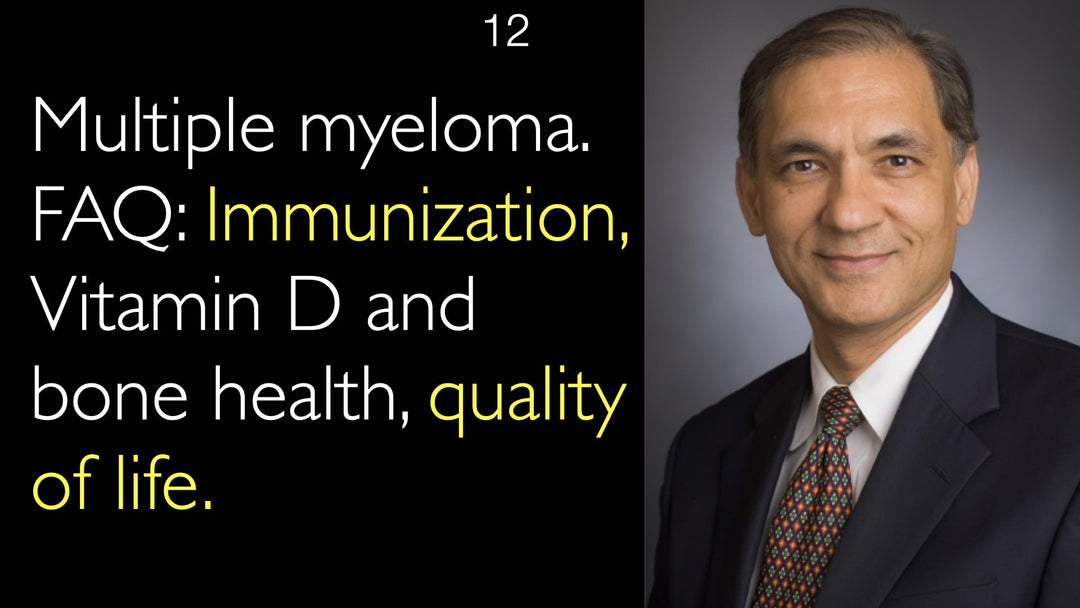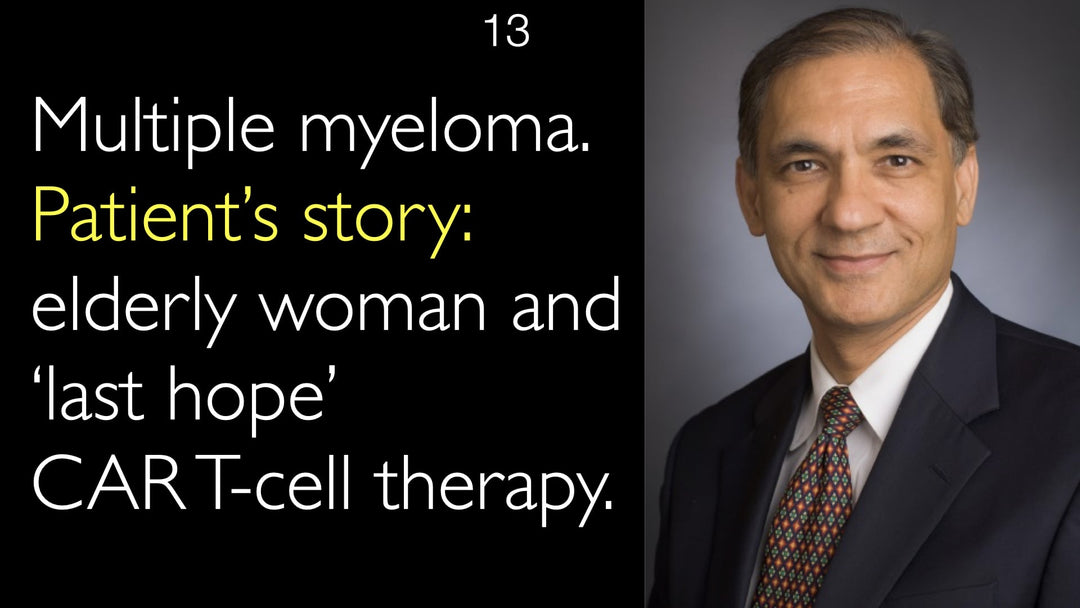Leading expert in thrombosis and hemostasis, Dr. Pier Mannucci, MD, explains the critical balance between stroke prevention and bleeding risk in elderly atrial fibrillation patients. He emphasizes that stroke risk significantly outweighs bleeding risk, even in patients over 90. Dr. Mannucci advocates for the use of direct oral anticoagulants over aspirin. He details strategies for safer anticoagulation in the elderly, including dose adjustments and closer monitoring.
Managing Atrial Fibrillation in the Elderly: Balancing Stroke and Bleeding Risks
Jump To Section
- Atrial Fibrillation in the Elderly: A Growing Prevalence
- Anticoagulation: A Must-Have Therapy for Stroke Prevention
- The Ineffectiveness of Aspirin for Stroke Prevention
- Strategies for Managing Bleeding Risk in Older Patients
- Advantages of Direct Oral Anticoagulants for Elderly Patients
- Full Transcript
Atrial Fibrillation in the Elderly: A Growing Prevalence
Atrial fibrillation incidence increases dramatically with age. Dr. Pier Mannucci, MD, notes that a staggering 70% of all patients with this common arrhythmia are between 65 and 85 years old. The problem is particularly acute in the oldest populations, where approximately one in ten individuals aged 80 or older has atrial fibrillation.
This high prevalence is a major clinical concern driven by the aging demographics of high-income countries. The conversation between Dr. Anton Titov, MD, and Dr. Pier Mannucci, MD, highlights that managing this condition in an aging population is an increasingly critical public health issue.
Anticoagulation: A Must-Have Therapy for Stroke Prevention
Dr. Pier Mannucci, MD, is unequivocal in his stance: anticoagulation is a mandatory treatment for most elderly patients with atrial fibrillation. The primary reason is the significantly elevated risk of stroke and systemic thromboembolism associated with the condition.
He describes the clinical dilemma as being "between Scylla and Charybdis," a classic metaphor for being caught between two dangers. However, he firmly believes the risk of a devastating stroke is much higher than the risk of a major bleeding event. Therefore, the bleeding risk is one that clinicians and patients must accept to achieve the greater benefit of stroke prevention.
The Ineffectiveness of Aspirin for Stroke Prevention
A key point Dr. Pier Mannucci, MD, stresses is the inadequacy of aspirin for protecting elderly atrial fibrillation patients from stroke. He expresses concern over a tendency among some physicians to abandon appropriate anticoagulation in very old adults out of fear, opting instead to prescribe aspirin.
This approach, while perhaps feeling safer, does not provide adequate protection against thromboembolism. Dr. Mannucci's analysis confirms that aspirin is not a suitable substitute for proper anticoagulant therapy in this high-risk patient population, a critical takeaway from his discussion with Dr. Anton Titov, MD.
Strategies for Managing Bleeding Risk in Older Patients
While advocating for anticoagulation, Dr. Pier Mannucci, MD, acknowledges that bleeding risk is indeed higher in octogenarians and nonagenarians compared to younger patients. This increased risk includes cerebral and gastrointestinal bleeding events.
He outlines practical strategies to mitigate this risk. This involves using anticoagulants "with a lot of attention." A common approach is to prescribe lower doses of direct oral anticoagulants (DOACs) for elderly patients. Furthermore, he emphasizes the necessity of monitoring these vulnerable patients very closely throughout their treatment to ensure safety and efficacy.
Advantages of Direct Oral Anticoagulants for Elderly Patients
Dr. Pier Mannucci, MD, highlights the particular advantages of direct oral anticoagulants for the geriatric population. He notes that paradoxically, at very advanced ages, the risk of a catastrophic stroke becomes even higher relative to the risk of bleeding, making DOACs especially worthy of use.
He points to significant practical benefits that improve patient quality of life and adherence. For an 80-year-old patient, traveling frequently to an anticoagulant clinic for monitoring can be a major burden. DOACs eliminate the need for regular laboratory control (INR testing), simplifying treatment. This ease of use leads to much higher adherence rates, ensuring continuous protection against stroke.
Full Transcript
Dr. Anton Titov, MD: So atrial fibrillation incidence increases with age. 70% of patients with atrial fibrillation are between 65 and 85 years of age. Patients with atrial fibrillation are at a higher risk of blood clots and thromboembolism. But at the same time, elderly patients with atrial fibrillation are at a higher risk of bleeding as a complication of anticoagulation.
How to correctly weigh this balance? How do you choose the medications and regimens for blood clot prophylaxis in elderly patients with atrial fibrillation?
Dr. Pier Mannucci, MD: Okay, as you mentioned, in people age 80 or older, one in 10 has atrial fibrillation, if not more. Also, in younger adults or older people, atrial fibrillation is a big problem and an increasing problem, probably because of the aging of the population, at least in high-income countries.
As you mentioned, we are between Scylla and Charybdis, as I wrote in one of the articles you read. I think that anticoagulation is a must-have in patients with atrial fibrillation. It is so because the risk of stroke is much higher than bleeding. So the bleeding is a risk that you must take.
I don't like the tendency among doctors of older people being abandoned, although doctors are scared, particularly for very older adults, and give them aspirin. Aspirin does not protect against the risk of stroke and thromboembolism.
So I think the risk of bleeding should be taken and anticoagulants used. Of course, you have to consider, as I told you, other factors. The risk of bleeding, particularly in younger patients with deep vein thrombosis or younger patients with atrial fibrillation, the risk of cerebral bleeding and gastrointestinal bleeding is less than the risk of bleeding in a patient in their 80s.
Again, you have to take this risk of bleeding. It is being taken even if a patient is over 90 years of age. Of course, you use anticoagulants with a lot of attention. Usually, we use lower doses of direct oral anticoagulants.
And of course, we monitor them very closely. But I would say, paradoxically, at that old age, the risk of a stroke is higher than the risk of bleeding. So the anticoagulants, and particularly the direct oral anticoagulants, are worthy of being used in atrial fibrillation.
For the reasons that I mentioned, for the 80-year-old patient to visit the anticoagulant clinic may be a problem. So the adherence became much higher with the use of direct oral anticoagulants, which are taken orally. So there is no need for laboratory control.







